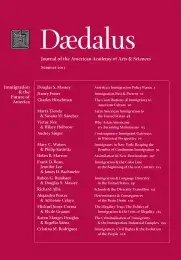The Contributions of Immigrants to American Culture
The standard account of American immigration focuses on the acculturation and assimilation of immigrants and their children to American society. This analysis typically ignores the significant contributions of immigrants to the creation of American culture through the performing arts, sciences, and other cultural pursuits. Immigrants and their children are not born with more creative talents than native-born citizens, but their selectivity and marginality may have pushed and pulled those with ability into high-risk career paths that reward creative work. The presence of large numbers of talented immigrants in Hollywood, academia, and the high-tech industries has pushed American institutions to be more meritocratic and open to innovation than they would be otherwise.
The lives of most immigrants are a dialectic between the memories of the world left behind and the day-to-day struggles of learning the ropes of a new society. Mastering a new language, living and working among strangers, and coping with the unfamiliar are only some of the challenges faced by immigrants. It is no wonder that nostalgia has a strong grip on the cultural pursuits of immigrants. Immigrant communities generally find comfort in familiar religious traditions and rituals, seek out newspapers and literature from the homeland, and celebrate holidays and special occasions with traditional music, dance, cuisine, and leisure-time pursuits. Yet not all immigrants look solely to the past to find meaning or to express their longings. Some immigrants, and their children in particular, are inspired by the possibility for innovative expression in American arts, culture, and pastimes. The partially fictionalized biography of the popular entertainer Al Jolson captures this experience. Jolson’s story was expressed, somewhat embellished, in the 1946 Oscar-winning film The Jolson Story, and was foretold in the 1927 film The Jazz Singer, in which Jolson plays the lead role.1 . . .
